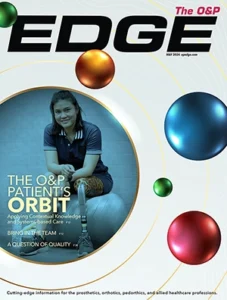
Researchers at the Griffith Center of Biomedical and Rehabilitation Engineering (GCORE) developed a diagnostic tool to streamline the custom fitting of bionic prosthetic limbs, shortening the process of trial and error. The team at GCORE, part of Griffith University, and Menzies Health Institute Queensland reached a milestone with the successful fitting of a bionic limb using the new diagnostic and digital twin system.
The team generated a digital twin (virtual replica) of the patient’s residuum to create a custom 3D-printed bionic limb. The prosthesis was then fitted, and the specially designed diagnostic software was used to test and assess the fitting, measuring the movement of the patient’s bones, muscles, tendons, fat, and skin.

“Until now, there have been few reliable, practical and affordable ways to determine the stress being imposed by a prosthesis on the residuum’s internal tissues,” said Laurent Frossard, PhD, a bionic limbs scientist and professor at Griffith University. “The health and comfort of the patient’s residuum is an ongoing problem for people who wish to use a prosthetic limb. A bionic solution is a technological platform relying on three interconnected pillars: the muscle control (‘the engine’), the direct skeletal attachment (‘the chassis’), and the prosthetic device (‘power-assisted steering wheel’).
“This device is key to providing patients with a radically new and empowering experience because it allows understanding of the way their bionic prostheses interacts with, and impacts on their residuum tissue. With the new technology, clinicians can help the patient understand how the load and pressure from the prosthesis stimulates the residuum during fitting of prosthesis and guide them to pain-free use during movements.”
Editor’s note: This story was adapted from materials provided by Griffith University.




